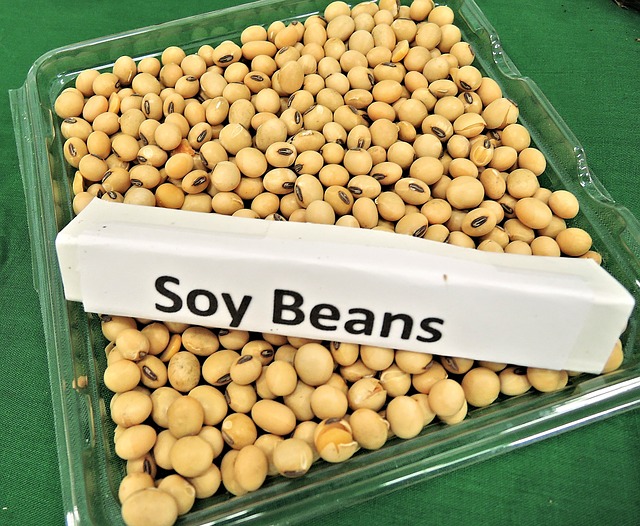I was at Costco yesterday picking up some food items when I came across a new product, edamame spaghetti. This was non-gmo, organic, and even Fair Trade sourced. The numbers looked good with 25 gms of protein, 11 gms of carb, and 11 gms of fiber per serving. The only ingredient was edamame – green soybeans. I figured ‘What the heck. Let’s give it a try.’
When I got home I heated up a pot of water and put a quarter of the package in once it reached boiling. It only needed 5 minutes and it was ready. Now for the taste test. I added a little organic butter and grated some Manchego, Spanish sheep milk cheese, over the top. It was surprisingly good. Gluten free pasta tends to be heavy and chewy and not that great tasting.
Now for the bigger question, is it healthy? I had to do a little research on edamame to see if it has the same issues soybeans, in general, have. It appears they do. Beyond the usual concerns for any large scale crop like GMO issues and pesticide/herbicide residues which were addressed right up front with organic and Non-GMO printed on the box, soy has a couple special concerns.
Soy is high in plant estrogens. Is this a concern? Getting straight information on this issue is remarkably difficult. There are a pile of experts who say plant estrogens are great for you and another pile of experts who say they are terrible for you. Each pile of experts has an equally tall pile of studies “proving” their
viewpoint. Who shall we believe? Typically in these situations the truth lies somewhere in the middle, and almost anything is bad for some people in certain situations. My advice: moderation solves most problems like these. Even the worst nay Sayers admit that there seems to be no problem with levels of plant estrogens below 30mg per day – a level unlikely to be exceeded eating natural foods in moderate amounts.
The second issue special to soy is its ability to interfere with your thyroid gland. Cruciferous vegetables share this trait with soy. After reading a dozen articles on the subject, my take is that this is unlikely to be a problem for people with healthy thyroid glands and no deficiency in iodine. However if you have hypothyroidism, or Hashimoto’s thyroiditis, or hyperthyroidism, eating too much soy could be a problem, especially of you are also low in iodine.
How would you know if you were low in iodine? There is not a simple way to test iodine levels accurately. The best test is a 24 hour urine collection after a measured iodine challenge. If you excrete 90% of the iodine you took then your iodine levels are fine. A single urine or blood sample will show gross problems, but not a good measure of normal. A very old and not very accurate test is the iodine skin test. Paint a patch of 2% iodine (the type used for cuts and scrapes) on your forearm or belly and see how long it takes for the color to go away. Normal would be 18 to 24 hours. If it disappears quickly it suggests that you are low in iodine.
Iodine is tricky. You can’t just take iodine willy nilly. If you have an autoimmune condition, iodine supplementation can trigger a severe flare-up of inflammation that could destroy your thyroid. Many people are sensitive to iodine and have to take it in very small doses to meet their needs – like 3mg at a time. So you can’t just beef up on iodine to make sure you are not low. About one quarter of the American population lives in the “goiter belt” – a region in the middle of America where the soil is depleted in iodine. The low levels of iodine in people there creates an enlargement of the thyroid gland, but with low functioning of the gland.
Low thyroid hormone levels are famous for producing poor energy, trouble thinking, hair falling out, sleeping trouble, puffy skin, and a host of other unpleasant things. So if you know you have thyroid issues, I would recommend simply staying away from soy foods and soy supplements. This is getting harder and harder to do every day. Soy is being put in so many different foods because it is a cheap source of plant protein. Soy is one of the top five most allergenic foods, so this spread of soy into so many foods is a big problem for many people who are allergic to it.
So if you don’t have thyroid problems or symptoms and don’t live in the goiter belt, then edamame spaghetti looks like a good meal occasionally – like once a week at best. If you really like your spaghetti, but don’t want the gluten and excess carbs, then there is always the konjack root version of spaghetti in the weird blister pack full of water that also has almost no calories. These were super popular a few years back. Another option from our vegan friends is spaghetti made from zucchini with a Spiralizer kitchen gadget. The only downside is that it tastes like zucchini, not spaghetti.
If you are not concerned with excess carbs an excellent choice for a spaghetti like noodle is yam threads and mung bean threads found in Asian stores. These taste delicious and serve very much like normal spaghetti.
My last choices for a spaghetti replacement are the gluten free varieties made from rice flour and corn flour. These are both grains and I tend to shy away from as I don’t want to eat grains too often. They are almost entirely carbohydrate, which means they turn to sugar in my gut in a few minutes.
So that was the excitement for my weekend.
